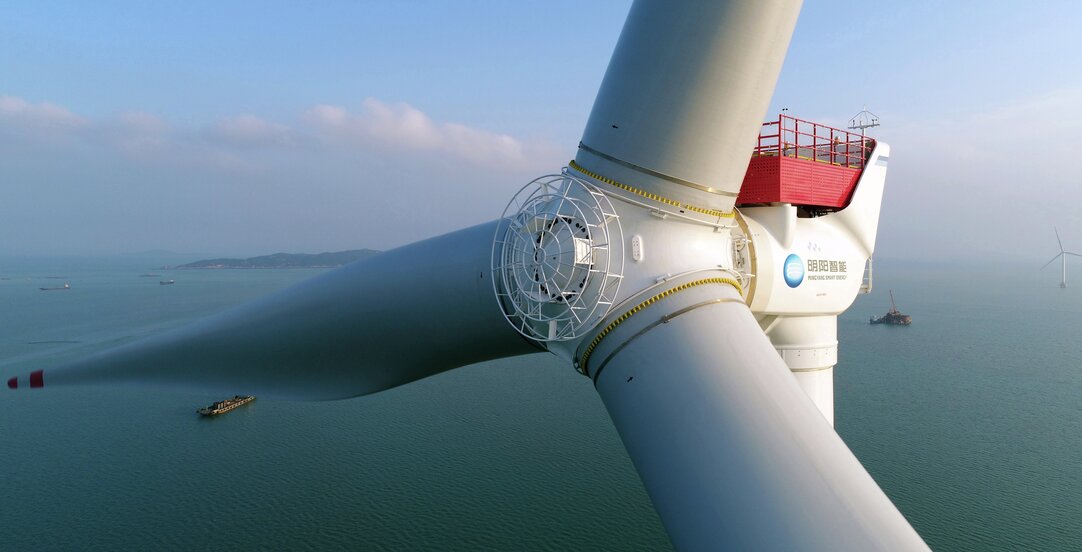Status on China’s offshore wind power development

Mainland China has become the largest offshore wind market in the world. An overall industry chain has been established which encompasses complete offshore wind installation and operation, as well as maintenance and spare parts manufacturing, presenting an attractive market for both domestic and foreign companies.
Reading time 4 minutes
China’s installed offshore wind capacity grew phenomenally in 2021, increasing by 12.7 GW according to statistical data by World Forum Offshore Wind (“WFO”). The result is that China’s total capacity now stands at around 19.7 GW and China has become the world’s largest offshore wind market by far with almost the same installed capacity as the UK and Germany combined. One of the key drivers for the recent increase in the number of installations is the expiration of the favorable feed-in tariff for projects which were grid connected by the end of 2021. China’s State Power Investment Corp’s (“SPIC”) project in Jiangsu Province is one example of a project that was grid connected in the final quarter of 2021, which at 800 MW is the project with the biggest capacity in China so far.
China’s offshore wind industry today
Broadly speaking, the offshore wind industry can be divided into three segments:
- upstream: production of materials and manufacturing of specially designed equipment and spare parts;
- midstream: offshore wind and cable installation; and
- downstream: operation and maintenance of offshore wind projects.
The upstream industry involves an enormous amount of competitors both in China and internationally. Looking at the offshore wind installation business, however, a large share of the market is dominated by several front-runners such as Shanghai Electric Group, Ming Yang Smart Energy and Goldwind, with the top five companies holding 73% of the installed capacity in 2020. Internationally, Shanghai Electric Group is the second-biggest player with 23.1% of the market share, followed closely by Siemens Gamesa with 24.3%. Ming Yang Smart Energy and Envision Group were respectively ranked as 4th and 5th with more than 10% of the market share. In the cable market, the top EU producers with leading technology, such as Nexans, Prysmian and ABB, still have high market shares. However, some Chinese companies are fast-growing and already have established technology for 220 kW and 500 kW submarine cables. Finally, focusing on the downstream industry, most of the offshore wind projects in China are owned and operated by state-owned companies such as GD Power Development, SPIC and CGTR.
The favorable policies stimulating the offshore wind industry in China
Having declared a goal of carbon neutrality by 2060, China’s carbon dioxide emissions per unit of GDP will have to drop by more than 65% compared to 2005 levels. To achieve this, renewable energy will have to reach approximately 25% of primary energy consumption. The target for total installed wind and solar power capacity is over 1.2 billion kilowatts by 2030. China is now in the middle of a transformation of its energy structure and offshore wind is playing a key part of this transformation; it is expected that large development projects will be presented to the international market in the coming decades, providing many opportunities.
The preferential feed-in tariff is one of the key policies directly stimulating the market. Under regulations published by the National Development and Report Commission of China (the “NDRC”) in 2019, the feed-in tariff for all projects approved by 2018 and grid-connected between 2019 and 2021 was 0.85 CNY per kW. This is a preferential price compared to other energy sources, including coal, hydroelectric, nuclear and natural gas. A guidance price system has been established for projects approved after 1 July 2019, replacing the previous standard price system, with the feed-in tariff for new projects established through market competition. In this way, China is on a road to imitating industry-leading countries such as the UK and Germany by continuously improving the competition regime through the feed-in tariff system, reducing costs and adding value rather than relying on public subsidies.
Opportunities for international players in the Chinese market
Looking at the offshore wind industry in China today, most of the foreign companies and capital are involved in the upstream industry, for example by providing specialised equipment and proprietary technology for projects. However, some international companies have made important progress into the Chinese market through cooperation with PRC state-owned companies. One such example is the French EDF which cooperated with CHN Energy in Jiangsu Dongtai on a 500,000 kW project in 2019. A joint development relationship between Equinor and SPIC was also set-up in 2019 for cooperation on offshore wind projects in both China and Europe, potentially expanding collaboration between the two companies.
Despite these opportunities, and the more comprehensive Foreign Investment Law implemented in 2020, many leading international companies still choose to wait and assess the ongoing developments, due to perceived legal and policy risks in China.
We do, however, expect to see an increase in cooperation between Chinese and international companies in future projects within the sector. As important industry players, Chinese state-owned companies have more influence on the formulation of the applicable regulations, and the feed-in tariff policies formulated by NDRC are aimed at safeguarding a “reasonable reward” for state-owned companies. In light of this, cooperation with Chinese state-owned companies may be considered a more prudent way of entering the Chinese market for international companies. Of course, it remains crucial for international companies to fully assess project viability for each specific project, with comprehensive due diligence from both a legal and a commercial perspective always being advisable before entering the market.
Main photo: MinYang Smart Energy


